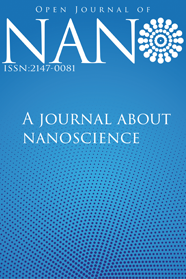Psylliostachys spicata (Willd.) Nevski’nin İki Farklı Lokasyondan Toplanan Örneklerinin Metanol Ekstraktlarının Bazı Biyolojik Aktiviteleri ve Element İçeriğinin Belirlenmesi
Psylliostachys spicata, bir çok üyesi tıbbi aromatik amaçla kullanılan Plumbaginaceae familyasından bir türdür. Bu çalışmada Üzümlük ve Gölgelikonak (Siirt, Türkiye) tuzlası çevresinden toplanan Psylliostachys spicata bitkisi, element içerik, toplam fenolik madde miktarı (Folin-Ciocalteu) ve antioksidan aktivite (1,1-difenil-2-pikrilhidrazin-DPPH) açısından değerlendirilmiştir. Element miktarları ICP-OES (İndüktif Eşleşmiş Plazma-Optik Emisyon Spektrometresi) cihazıyla ppm düzeyinde belirlenmiş olup her iki bölge için bazı ağır metal içerikler, (Pb, Zn, Fe) Dünya Sağlık Örgütü’nün izin verdiği max. değerin altında çıkarken; Cd ve As gibi toksik metaller ise tespit edilememiştir. Metanol ile elde edilen ekstraktların analizi sonucunda, toplam çözünebilen fenolik madde miktarı ve antioksidan aktivitesinin kullanım açısından her iki lokalite için kabul edilebilir değerler arasında olduğu belirlenmiştir. Elde edilen sonuçlara göre P.spicata' nın toksik metal içerik bakımından endişe vermediği potansiyel bir antioksidan kaynağı olduğu düşünülmektedir.
Anahtar Kelimeler:
Toplam fenolik içerik, element analizi, Psylliostachys spicata, Siirt
Determination of Some Biological Activities and Elemental Content of Methanol Extracts of Psylliostachys spicata (Willd.) Nevskis’ Specimens Collected from Two Different Locations
Psylliostachys spicata is a species of Plumbaginaceae family which are used for medical aromatic purposes. In this study, Psylliostachys spicata that collected from Üzümlük and Gölgelikonak (Siirt, Turkey) salts areas were evaluated with regard to element content, total phenolic content (Folin-Ciocalteu) and antioxidant activity (1,1-diphenyl-2-picrylhydrazine-DPPH). While for both regions some heavy metal contents (Pb, Zn, Fe) were below the allowed by the World Health Organization, toxic metals such as Cd and As were not detected. As a result of the analysis of the extracts obtained with methanol, it was determined that the total amount of soluble phenolics and antioxidant activity were among the acceptable values for both localities. According to the results, it is thought that P. spicata is a potential source of antioxidant which is not a concern in terms of toxic metal content.
Keywords:
Psylliostachys spicata Total phenolic content, element analysis, Psylliostachys spicata, Siirt,
___
- [1] K. Kubitzki, "Flowering Plants Dicotyledons. The Families and Genera of Vascular Plants", Germany: Springer, 2004.
- [2] M.D. Lledó, M.B. Crespo, M.F. Fay, M.W. Chase", Molecular phylogenetics of limonium and related genera (Plumbaginaceae): Biogeographical and systematic implications," Am. J. Bot, vol. 92, no 7, pp. 1189–98, 2005.
- [3] M. Fidan, "Assessment of biologicalactivityand element analysis of Psyllıostachysspicata (Wılld.) Nevski", J. Anim. Plant Sci. Vol. 28, no 6, pp. 1635-1640, 2018.
- [4] A. Güner, S. Aslan, T. Ekim, M. Vural, M.T. Babaç, "Türkiye Bitkileri Listesi (Damarlı Bitkiler). İstanbul, Turkey: Flora Araştırmaları Derneği ve Nezahat Gökyiğit Botanik Bahçesi Yayını", 2012.
- [5] F. Celep, O. Karabacak, M. Malekmohammadi, M. Fidan, M. Doğan, "First record of Psylliostachys Spicata (Plumbaginaceae), confirmation of Salvia Pratensis (Lamiaceae) from Turkey, and taxonomic status of Salvia Ertekinii", Turk. J Bot, vol. 40, no 2, pp. 226–30, 2016.
- [6] D.S. Fabricant, N.R. Farnsworth, "The value of plants used in traditional medicine for drug discovery", Environ. Health Perspect, vol: 109, no. 1, pp. 69–75, 2001.
- [7] N. Sahoo, P. Manchikanti, S. Dey, "Herbal drugs: standards and regulation", Fitoterapia, vol: 81, no. 6, pp. 462–471, 2010.
- [8] World Health Organization (WHO). Traditional Medicine Strategy (2002–2005). World Health Organization. Geneva. Switzerland. 2002.
- [9] E. Ernst, "Toxic heavy metals and undeclared drugs in Asian herbal medicines", Trends Pharmacol. Sci, vol: 23, no. 3: pp. 136–139, 2002.
- [10] Global Biodiversity Information Facility (GBIF), URL: https://www.gbif.org/species/7422531 (Erişim zaman; 24.12.2018).
- [11] L. Su, J.J. Yin, D. Charles, K. Zhou, J. Moore, L.L. Yu, "Total phenolic contents chelating capacities and radical-scavenging properties of black peppercorn, nutmeg, rosehip, cinnamon and oregano leaf", Food Chem. vol: 100, no. 3, pp. 990-997, 2007.
- [12] M.S. Blois, "Antioxidant determinations by the use of a stable free radical", Nature. vol: 181, no. 4617, pp. 1199-1200, 1958.
- [13] U. Yüksel, I. Tegin, R. Ziyadanogullari, R. 2017. "Recovery of copper and cobalt from copper slags as selective", J. Environ. Sci. Eng, vol: 6, no. 8, pp. 388–94, 2017.
- [14] H. Tariq, M. Arshad, S. Khan, H. Sattar, M.S. Qureshi, "In vitro screening of methanol plant extracts for their antibacterial activity", Pak. J Bot, vol: 43,no.1, pp. 531-38, 2011.
- [15] World Health Organization, WHO Guidelines for Assessing Quality of Herbal Medicines with Reference to Contaminants and Residues,WorldHealth Organization,Geneva, Switzerland, 2006.
- [16] World Health Organization (WHO), Quality Control Methods for Medicinal Plant Materials, World Health Organization, Geneva, Switzerland, 2005.
- Yayın Aralığı: Yılda 2 Sayı
- Başlangıç: 2012
- Yayıncı: Mustafa CAN
